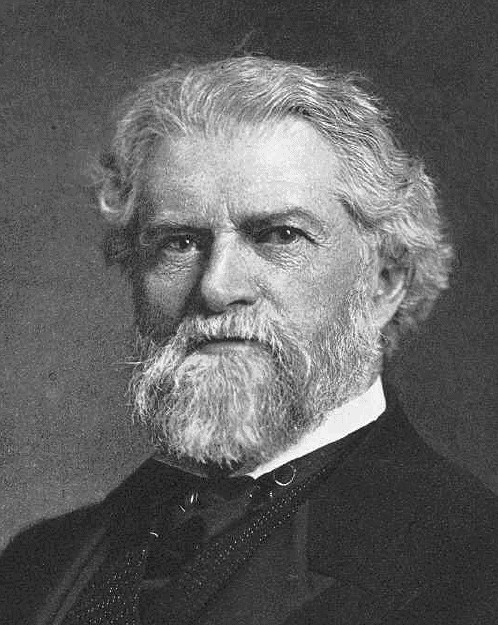

It was a strange road that led Simon Newcomb from rural Nova Scotia to international prominence as an astronomer with the United States Navy. (He retired as a Rear Admiral, but he was a "paper and pencil" officier at the Naval Observatory and Nautical Almanac Office.) As he recounts in his memoir Reminiscences of an Astronomer (1903), his early education was in the hands of his father who followed "the precarious occupation of a country school teacher" in rural Nova Scotia and Prince Edward Island. "What we now call school training, the pursuit of fixed studies at stated hours under the constant guidance of a teacher, I could scarcely be said to have enjoyed." To his rural neighbors, bookish Newcomb's future seemed in doubt as he to lacked the skills needed for success (e.g., driving a team of oxen) or the money required for educated jobs like lawyer or preacher. Perhaps he should be sent to Halifax as a midshipman, as he had demonstrated an interest in navigation..."to a boy living on the seacoast, who naturally thought a ship of war was one of the greatest works of man, the book [Moore's "Navigator"] was of much interest."
The solution to the problem of Newcomb's future was solved when at age 16 he was apprenticed to "Doctor" Foshay of Salisbury, New Brunswick. Foshay turned out to be a quack herbalist. Two years later, thinking that he had been taught everything Foshay knew: nearly nothing, Newcomb ran away from his apprenticeship to join his father in "the States". He found teaching jobs in Maryland, which allowed him to access the Smithsonian Institute in Washington D.C.. There he met Joseph Henry (whose name has become the unit of inductance) who was the director of the institute. (These days the Smithsonian has become a largely curatorial institution rather than a center for science. Henry, the Smithsonian's first director, was a staunch opponent of this trend.)
Through Henry, Newcomb heard of the Coast Survey and Nautical Almanac, which had jobs for men who could accurately calculate: "computers". The entry jobs required little more than knowledge of trig and log tables, but obviously advanced positions required knowledge of the basis of the calculation: physics, mathematics, and statistics.
Newcomb writes:
I date my birth into the world of sweetness and light on one frosty morning in January, 1857, when I took my seat between two well-known mathematicians, before the blazing fire in the office of the "Nautical Almanac" at Cambridge, Mass. I had come from Washington, armed with letters from Professor Henry and Mr. Hildard, to seek trial as an astronomical computer. The men beside me were Professor Joseph Winlock, the superintendent, and Mr. John D. Runkle, the senior assistant in the office. I talked of my unsuccessful attempt to master the "Mécanique Céleste" of Laplace [a book he borrowed from the library of the Smithsonian] without other preparation than that afforded by the most meagre text-books of elementary mathematics of that period. ...I was then in my twenty-second year, but it was the first time I had ever seen any one who was familiar with the "Mécanique Céleste" ... My own rank was scarcely up to that of a tyro; but I was a few weeks later employed on trial as computer at a salary of thirty dollars a month
Computers at Nautical Almanac had great freedom in choice of work hours (it being mostly necessary to get the work done on time), so Newcomb was able to pursue a formal education in mathematics at Lawrence Scientific School [Harvard] working under Benjamin Peirce. In 1861 he was commissioned as a Professor of Mathematics assigned to the Naval Observatory in Washington D.C. From 1877-1897 he directed the Nautical Almanac (which had since moved to D.C.). At the Nautical Almanac he completed his most important work:
a systematic determination of the constants of astronomy from the best existing data, a reinvestigation of the theories of the celestial motions, and the preparation of tables, formulae, and precepts for the construction of ephemerides, and for other applications of the same results.
Newcomb was a founding member and first president (1899-1905) of the American Astronomical Society. He also served as president the American Association for the Advancement of Science (1876-1878), president of the American Mathematical Society (1897-1898), and member (1869) and vice president (1883) of National Academy of Sciences. At the time, he was one of a very few American scientists with an international reputation. [ Here is his obituary from The Times of London.]
